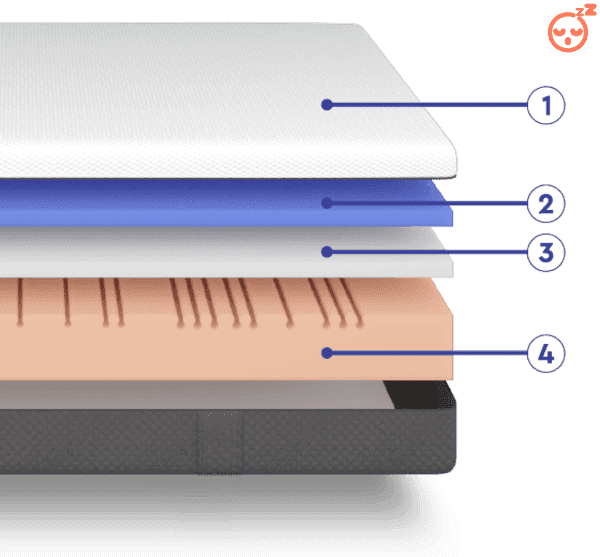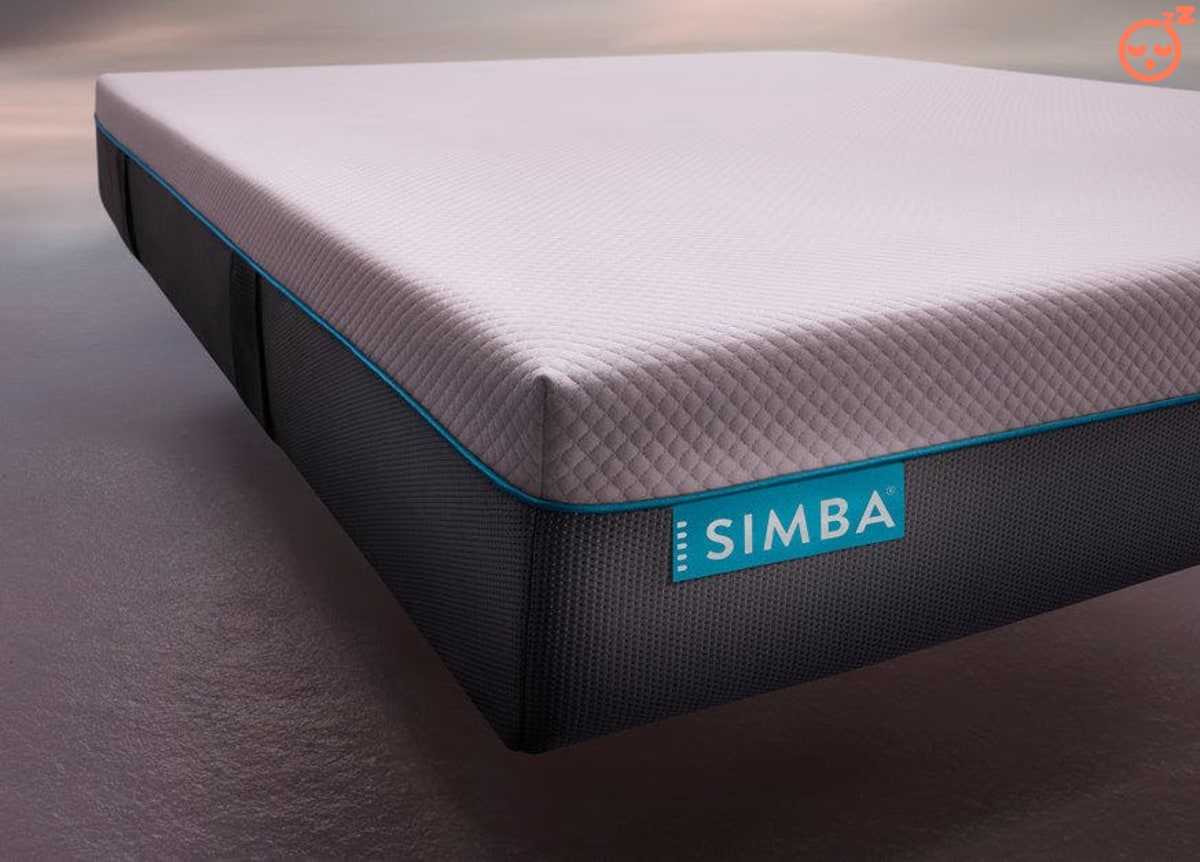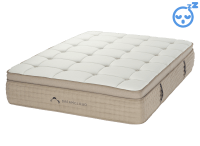Is the Hybrid mattress best? Guide, 2022
A hybrid mattress applies a combination of mattress technologies or distinct constructions, which is organized as a multi-layered system. They use different constructions, to address the various features that a quality mattress must have such as comfort and support. Specifically, for a hybrid to be classed as one it must consist of a core support structure of spring coils that will sit below an upper-level comfort layer. Often the organized combination at the top between the comfort layers and transition layers has much to do with complementing the other materials and enhancing how the mattress will perform in those areas. Hybrids have become one of the most popular choices in mattress purchasing because of how they are designed to excel in almost whatever area you think makes a mattress worth buying. They emerged when there was a sudden acknowledgment by the public that innerspring coils and even foam mattresses alone weren’t meeting the high demands and more was required.
Typically hybrid mattresses are suitable for side-sleepers, stomach-sleepers, back-sleepers and combo-sleepers who do a bit of each in their sleep.
Construction of a hybrid mattress
A lot of the time hybrid mattresses follow the same pattern for layered components and sequence.

Pillow top
This is not commonly found in hybrid mattresses, but when it is used it further improves the cushioned feel and padded nature of the layers below. It is sewn to the upholstery of the mattress and it is the very top layer of hybrid mattresses that use them. Usually, they are not made thicker than 2 inches. Due to its lack of structured firmness, it is not the layer that brings support or even sturdiness that the base layer will. In fact, since they only really give a couple more inches of luxurious padding, many manufacturers decide just to focus on optimizing their comfort layers and core support structures instead of adding a pillow top. There are a variety of materials that could be used for them. Materials that are used to construct pillow tops are latex, memory foam, wool and polyester, among others.
Comfort layer
This is the upper layer of the mattress. They are usually produced with latex, memory foam, or even cooling gels. The cooling gel, which likely will come in the form of pods, as the name suggests acts to keep you cool by deflecting heat, but it does more than that. It also is excellent for body molding. The latex, memory foam and poly-foam also do well with making the mattress curve around the shape of your body. Usually, the comfort layer is around 4 inches thick which is enough for its properties to enhance your sleep. Some mattress companies split these few inches between several materials, sometimes combining latex with memory foam for example which lets these layers modify the level of comfort of the mattress. Due to how these constructions respond to your shaping and weight they can even diminish pains that may have been bothering you before.

Transition layer
This is normally the middle layer of the mattress sitting between the upper comfort layer and the lower layers of the core support structure and the base. It is the mediator between these layers as they are a cushioning factor that balances out the firmness of the core support and base with the softness of the comfort layer. The materials used in a transition layer often have similar properties to that of the comfort layer. Latex, memory foam, cooling gel and polyfoam are used interchangeably between the layers because it is not too important which of these constructions is used for the transition layer. However, it is most common for transition layers to be made up of polyfoam which helps with providing a cushy feel. The idea is simply for the transition layer to use another material to supplement the comfortability and adaptability that the comfort layer would already be offering on top of the base levels, so often the latex, memory foam, or other material used will be a great performer in what the other material of the comfort layer is lacking.
Core support structure
Since hybrid mattresses refer to a combination of technologies and constructions in their layered system, where within their combo-construction, innerspring coils are their mainstay, this unchanging aspect of hybrids only allows for construction differences on the thickness of the layer and the system of springs used. Most hybrid mattresses have an inner-spring coiled support structure instead of a pocket-sprung one. Usually, it falls in the region of being 7 to 8 inches thick, which is enough for springs to compress and elongate with changing pressure.
The core support structure is vital for the airflow of the mattress, preventing the trapping of air and heat, meaning that temperatures do not rise to a level that can cause a lot of discomforts. This layer usually is found beneath the comfort layer and the transition layer if one is used. The springs offer a high level of support with the springs ideal for absorbing the forces exerted upon them and due to the responsiveness of the spring, they tend to be rather durable. However, the level of durability can vary between the types of springs, such as Bonnell coil, Marshall coil and continuous coil differ in terms of shape, so even though they each can be trusted to be resilient, they have differing levels of being worn down. It is important to check if the hybrid mattress you are considering is using pocket springs or innersprings as this difference is significant in determining the mattress's adaptability, motion isolation, compression capabilities, sinkage levels and even thermo-regulation. To learn more about the difference between pocket springs and innerspring mattresses to know what hybrid mattress likely will best suit you, check out the link.
Base layer
This is typically the very bottom part of a hybrid layered system and will usually be directly beneath the core support structure. They bring stability to the multiplicity of the learning system. Often they are made up of poly-foam which improves the support which is provided above in the core support structure and they usually mirror the transition layer in terms of materials used, so the core support structure is sandwiched between layers that will optimize the comfort of the mattress. The poly-foam is built with polyurethane which is a lightweight material with a low density. Polyurethane has only recently been used commonly in the base layers of mattresses because of how it compresses. Before it was preferred more for the top layer or upholstery in spring mattresses. The reason polyurethane is better at the base than as the comfort layer is that whilst it does well with the support it does not provide great adaptability and isolated pressure relief like pocket springs, memory foam or even latex. Placed here, it provides a sturdy foundation for the other more versatile layers to do what they were designed for. An example of a mattress that uses Poly-foam for a base layer is the Emma original mattress. To see how the Emma original uses it as a base and see if it would suit your needs for a mattress check out the link below.
The base is great for shock absorption. This further supplements the force absorption of the coils in the support structure which relieve pressure when the coils compress, so the energy is taken further down into the mattress, having less of a noticeable effect on you. Also, the absorption qualities of the base layer are designed to even sound-proof the noise of springs when they are being moved upon. By diminishing this noise, peace is achieved and sleep can go on undisturbed.
Examples of hybrid mattresses
Get the sleep you deserve with our mattress and sleeping product reviews.
© Undercover Mattress 2022










